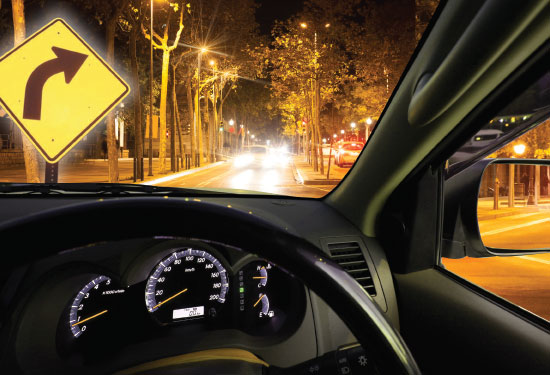Choosing the Right Cataract Treatment
Before making any decision about treatment, your ophthalmologist will need to assess your eyes and general health.
They will:
- Carefully examine the external and internal structures of both eyes.
- Assess your vision with modern tests that determine how much vision has been affected.
- Determine whether the cataract can be removed safely and successfully.
- Determine whether any other eye conditions or diseases are present and need treatment.
- Need to know your complete medical history such as health problems, medical risks, allergies, blood disorders and medicines you take.
After this thorough examination, your ophthalmologist will discuss the diagnosis with you and recommend the best treatment.
Understanding your Cataract Surgery IOL Options
Cataract surgery is one of the most commonly-performed procedures around the world today where a surgeon makes an incision, removes the defective lens and then replaces it with a new intraocular lens (IOL) to restore vision.
There are two key procedures available to treat cataracts.
1. Cataract Surgery
This involves a tiny incision being made with a blade to allow a small instrument (about the size of a pen tip) to break up or wash away the cloudy cataract. An IOL is inserted through the same tiny incision and is unfolded and set into its permanent position.
2. Laser Cataract Surgery
See better, faster. This new femtosecond laser procedure replaces the initial key steps of cataract surgery currently performed using a blade. Using the femtosecond laser offers a range of benefits over standard cataract treatment, including:
- Greater predictability of the outcome due to accuracy of the laser
- Faster procedure time
- Reduces stress on the eye tissue
- Better/faster healing comfort
- Maximises the IOL
The IOL Intraocular Lens (IOL)
The intraocular lens is designed to reside inside the eye and replaces your own natural lens because it has been clouded over by a cataract, or to change the eye’s optical power.
There is a range of options available and the best one for you will depend on your current vision and your visual goals. Your surgeon will discuss these with you and recommend the best option available.
| DISTANCE | SINGLE VISION | EXTENDED RANGE OF VISION | TRIFOCAL |
| FAR | CLEAR | CLEAR | CLEAR |
| INTERMEDIATE | BLURRED | CLEAR | CLEAR |
| NEAR | BLURRED | BLURRED | CLEAR |
Examples of distance
 |
 |
 |
| NEAR 40 cm |
INTERMEDIATE 60 cm |
FAR Beyond 100 cm |
| Reading, smart phone or tablet use | Working on a computer, focusing on items on a supermarket shelf or a kitchen bench | Watching TV, driving and attending sporting events |
Trifocal IOLS are great lifestyle lenses but some adaptation to glare and halos around lights is required.
IOLs offers lens options to deliver excellent visual quality and acuity over a range of distances. Your surgeon will recommend the options that will best suit your eyes and your lifestyle. This information is designed to help you understand the recommendation made by your surgeon.
Types of IOL lenses
SINGLE VISION - Designed for optimal distance vision
While it may not suit those wanting a continuous range of vision (and where glasses will be required for intermediate and near tasks), it will suit the patient:
- who wants excellent distance vision and are happy to wear glasses for near and intermediate tasks
- with other pre-existing eye conditions
EXTENDED RANGE OF VISION - Designed for clear vision at distance & intermediate
It will suit the patient:
- Limited near vision activities, more focus on intermediate.
- Reading on devices with support of zoom
- Dim light activities are important (i.e. night driving)
TRIFOCAL - Designed for clear distance vision and seamless vision from intermediate through to near

While it may not be suitable for patients with sensitivity to glare or haloes around lights, night driving requirements, or other existing conditions such as glaucoma or macular degeneration, it will suit the patient who:
- is constantly reading books and newspaper with small print
- does needlepoint
- applies makeup, shaves or styles hair
- has no other existing eye conditions
Glare and halos
While trifocal lenses provide excellent vision without glasses, some adaption to glare and halos is necessary for most patients.
The glare and halos are most noticeable when there are a lot of bright lights, for example driving at night. Your brain is generally able to adapt and the glare and halos will become less noticeable over time. The picture below demonstrates what glare (streetlights and car headlights) and halos (road sign and white stripe on the edge of the road) might look like.

Cost of Cataract Surgery
The cost of cataract surgery varies depending on the procedure and the IOL used. Medicare and/or your health fund will often cover the majority of the cost. We also have no-gap options available.
Trust the experts
Your eyesight is too important to risk. So, talk to experts who are experienced in what they do. We are proud of our expertise, excellence and high ethical standards. Our primary objective is to assure the optimal outcome for your future vision.
You are most welcome to visit our centres, talk with our staff, view surgery if you so choose, speak to our doctors.

